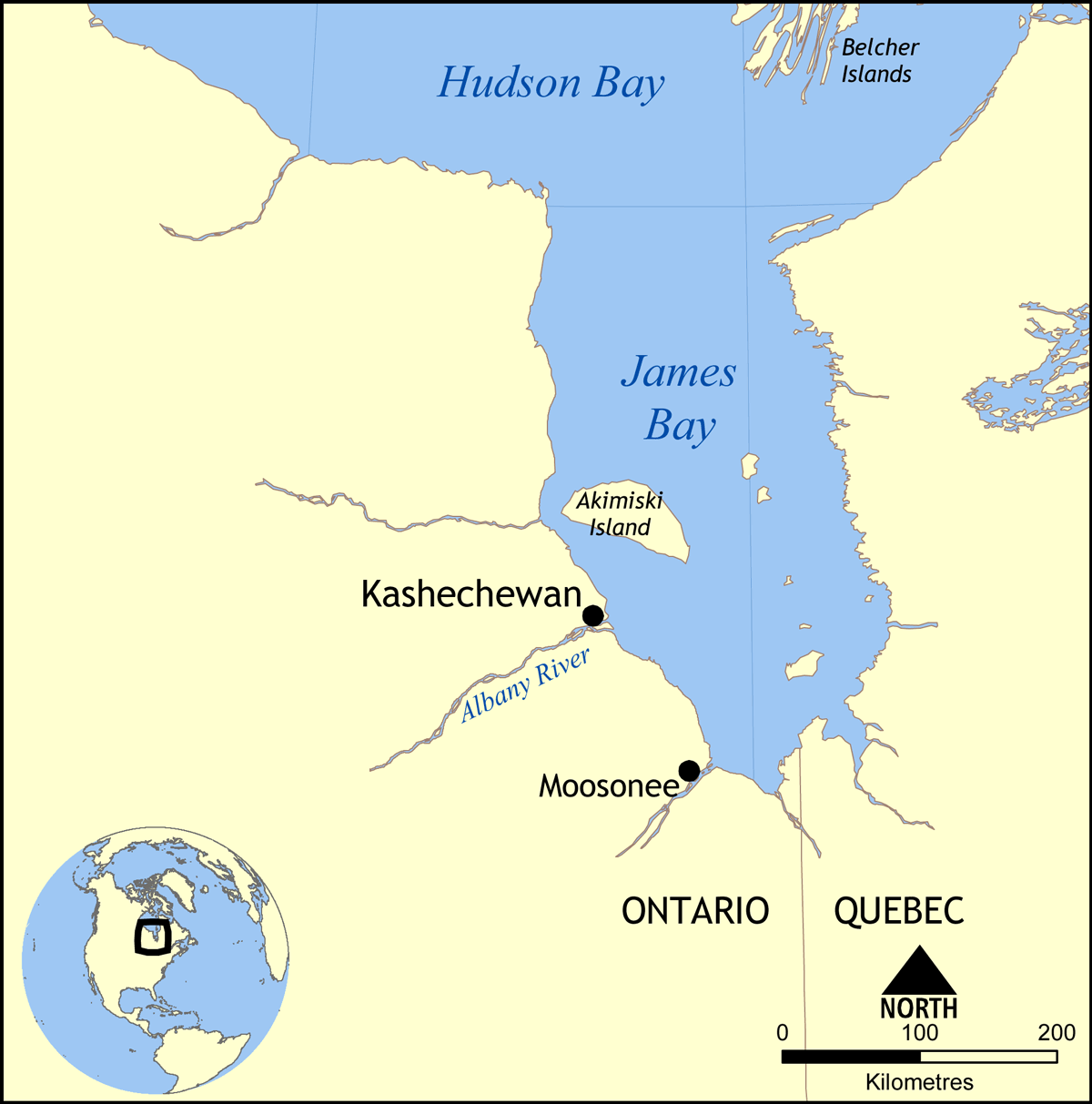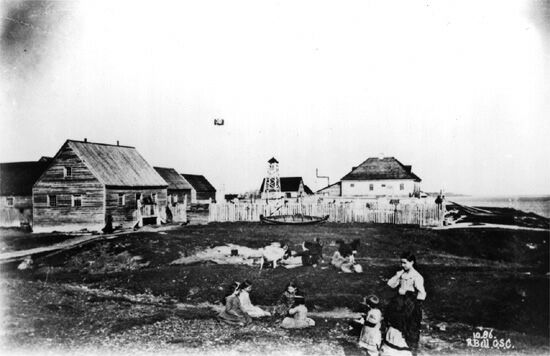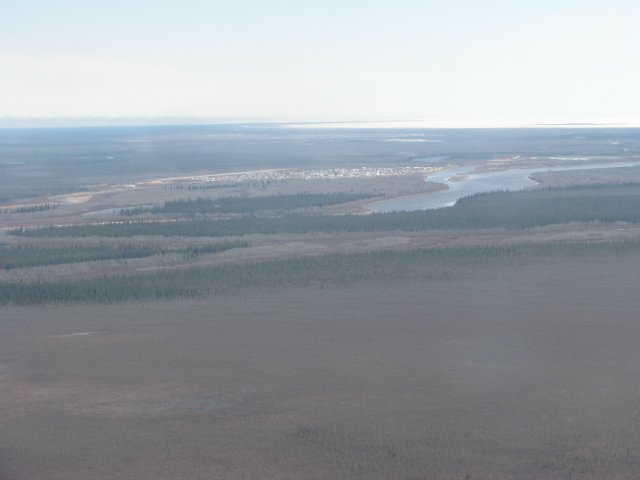|
Kashechewan
The Kashechewan First Nation (, cr, ᑫᔒᒋᐗᓐ ᐃᓕᓕᐗᒃ, kêšîciwan ililiwak) is a Swampy Cree, Cree First Nations in Canada, First Nation band government located near James Bay in Northern Ontario, Canada. The community is located on the northern shore of the Albany River. Kashechewan First Nation is one of two communities that were established from Old Fort Albany (now the Fort Albany First Nation, Fort Albany 67 Indian Reserve) in the 1950s. The other community is Fort Albany First Nation, which is now located on the southern bank of the Albany River. The community is connected to other towns along the shore of James Bay by the seasonal ice road/winter road, linking it to the towns of Attawapiskat, Ontario, Attawapiskat, Fort Albany, Ontario, Fort Albany, and Moosonee, Ontario, Moosonee. Kashechewan is policed by the Nishnawbe-Aski Police Service, an Aboriginal-based service. A fire at the detachment on January 9, 2006, severely injured an officer and killed ... [...More Info...] [...Related Items...] OR: [Wikipedia] [Google] [Baidu] |
Kashechewan Map
The Kashechewan First Nation (, cr, ᑫᔒᒋᐗᓐ ᐃᓕᓕᐗᒃ, kêšîciwan ililiwak) is a Swampy Cree, Cree First Nations in Canada, First Nation band government located near James Bay in Northern Ontario, Canada. The community is located on the northern shore of the Albany River. Kashechewan First Nation is one of two communities that were established from Old Fort Albany (now the Fort Albany First Nation, Fort Albany 67 Indian Reserve) in the 1950s. The other community is Fort Albany First Nation, which is now located on the southern bank of the Albany River. The community is connected to other towns along the shore of James Bay by the seasonal ice road/winter road, linking it to the towns of Attawapiskat, Ontario, Attawapiskat, Fort Albany, Ontario, Fort Albany, and Moosonee, Ontario, Moosonee. Kashechewan is policed by the Nishnawbe-Aski Police Service, an Aboriginal-based service. A fire at the detachment on January 9, 2006, severely injured an officer and killed ... [...More Info...] [...Related Items...] OR: [Wikipedia] [Google] [Baidu] |
Fort Albany, Ontario
Fort Albany First Nation ( cr, ᐲᐦᑖᐯᒄ ᐃᓕᓕᐗᒃ pîhtâpek ililiwak, "lagoon Cree") is a Cree First Nation in Cochrane District in Northeastern Ontario, Canada, within the territory covered by Treaty 9. Situated on the southern shore of the Albany River, Fort Albany First Nation is accessible only by air, water, or by winter road. The community is policed by the Nishnawbe-Aski Police Service, an Aboriginal-based service. It shares the Fort Albany 67 Indian Reserve with the Kashechewan First Nation, which officially separated from Fort Albany First Nation in 1977. Fort Albany First Nation controls the Fort Albany Indian Settlement on the south shore of the Albany River, and the Kashechewan First Nation controls the Kashechewan Indian Settlement directly across the river. Fort Albany was established in 1679 as one of the oldest and most important of Hudson's Bay Company posts. It was also involved in Anglo-French tensions leading to the Battle of Fort Albany in 16 ... [...More Info...] [...Related Items...] OR: [Wikipedia] [Google] [Baidu] |
Fort Albany First Nation
Fort Albany First Nation ( cr, ᐲᐦᑖᐯᒄ ᐃᓕᓕᐗᒃ pîhtâpek ililiwak, "lagoon Cree") is a Cree First Nation in Cochrane District in Northeastern Ontario, Canada, within the territory covered by Treaty 9. Situated on the southern shore of the Albany River, Fort Albany First Nation is accessible only by air, water, or by winter road. The community is policed by the Nishnawbe-Aski Police Service, an Aboriginal-based service. It shares the Fort Albany 67 Indian Reserve with the Kashechewan First Nation, which officially separated from Fort Albany First Nation in 1977. Fort Albany First Nation controls the Fort Albany Indian Settlement on the south shore of the Albany River, and the Kashechewan First Nation controls the Kashechewan Indian Settlement directly across the river. Fort Albany was established in 1679 as one of the oldest and most important of Hudson's Bay Company posts. It was also involved in Anglo-French tensions leading to the Battle of Fort Albany in 16 ... [...More Info...] [...Related Items...] OR: [Wikipedia] [Google] [Baidu] |
Attawapiskat, Ontario
The Attawapiskat First Nation ( Cree: , "People of the parting of the rocks"; unpointed: ) is an isolated First Nation located in Kenora District in northern Ontario, Canada, at the mouth of the Attawapiskat River on James Bay. The traditional territory of the Attawapiskat First Nation extends beyond their reserve up the coast to Hudson Bay and hundreds of kilometres inland along river tributaries. The community is connected to other towns along the shore of James Bay by the seasonal ice road/winter road constructed each December, linking it to the towns of Kashechewan First Nation, Fort Albany, and Moosonee (Minkin 2008:1) Attawapiskat, Fort Albany, and Kashechewan operate and manage the James Bay Winter Road through the jointly owned Kimesskanemenow Corporation, named after the Cree word for "our road" -''kimesskanemenow''. Attawapiskat is the most remote northerly link on the road to Moosonee. They control the reserves at Attawapiskat 91 and Attawapiskat 91A. Etymology ... [...More Info...] [...Related Items...] OR: [Wikipedia] [Google] [Baidu] |
Kashechewan Airport
Kashechewan Airport is located west of the First Nations community of Kashechewan, Ontario, Canada. The airport handles turboprop A turboprop is a turbine engine that drives an aircraft propeller. A turboprop consists of an intake, reduction gearbox, compressor, combustor, turbine, and a propelling nozzle. Air enters the intake and is compressed by the compressor. Fuel ... aircraft only. Airlines and destinations References External links * Certified airports in Kenora District {{Ontario-airport-stub ... [...More Info...] [...Related Items...] OR: [Wikipedia] [Google] [Baidu] |
Nishnawbe-Aski Police Service
The Nishnawbe-Aski Police Service (NAPS), also occasionally known as the Nishnawbe Aski Police Service (without a hyphen) is the police agency for Nishnawbe-Aski Nation (NAN). As of July 2020, NAPS has 34 detachments in NAN communities across the territory covered by Treaty 9 and Treaty 5 within Ontario. Mr. Roland Morrison was sworn in as chief of police in 2019. As of July 2020, the agency has 203 officers, about 60% of whom are Indigenous, making NAPS the largest Indigenous police force in Canada, and the second-largest in North America. NAPS is responsible for a jurisdiction that includes two-thirds of Ontario, a land area approximately the size of France.Nishnawbe-Aski Police Service History. Retrieved February 18, 2008. NAPS receives 48% of its funding from the |
Moosonee, Ontario
Moosonee () is a town in northern Ontario, Canada, on the Moose River approximately south of James Bay. It is considered to be "the Gateway to the Arctic" and has Ontario's only saltwater port. Nearby on Moose Factory Island is the community of Moose Factory to which it is connected by water taxi in the summer and ice road in the winter. There is no road connection to the community but flights are provided by Air Creebec and by Thunder Airlines. Moosonee is also the railhead of the Ontario Northland Railway where goods are transferred to barges and aircraft for transport to more northerly communities. Moosonee is not particularly far north, being located at 51°N—which is roughly the same latitude as Saskatoon, Calgary, London (UK), and Berlin—but is colder due to its proximity to Hudson Bay, and isolated due to its lack of road access to the rest of Ontario. The community was the site of a fur trading post set up in 1903 by Revillon Frères, competitors to the Hudson's Bay ... [...More Info...] [...Related Items...] OR: [Wikipedia] [Google] [Baidu] |
Moosonee
Moosonee () is a town in northern Ontario, Canada, on the Moose River approximately south of James Bay. It is considered to be "the Gateway to the Arctic" and has Ontario's only saltwater port. Nearby on Moose Factory Island is the community of Moose Factory to which it is connected by water taxi in the summer and ice road in the winter. There is no road connection to the community but flights are provided by Air Creebec and by Thunder Airlines. Moosonee is also the railhead of the Ontario Northland Railway where goods are transferred to barges and aircraft for transport to more northerly communities. Moosonee is not particularly far north, being located at 51°N—which is roughly the same latitude as Saskatoon, Calgary, London (UK), and Berlin—but is colder due to its proximity to Hudson Bay, and isolated due to its lack of road access to the rest of Ontario. The community was the site of a fur trading post set up in 1903 by Revillon Frères, competitors to the Hudson's Bay ... [...More Info...] [...Related Items...] OR: [Wikipedia] [Google] [Baidu] |



